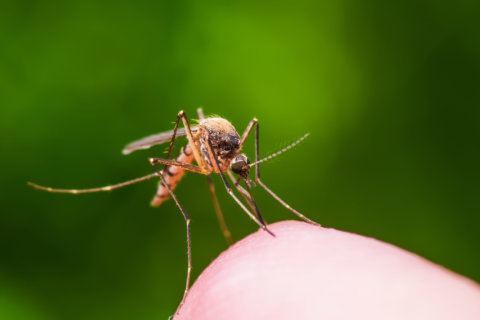The return of summer means many people will be spending time outdoors, which also means there will be plenty of ticks ready to latch on for their next meal. With tick season here, there are steps people can take not only to keep the bugs off but also to knock down their population.
“The ticks are looking for their blood meal to get to the next phase of their life,” said Dr. David Goodfriend, director of Loudoun County, Virginia’s Health Department.
Right now, it is too early to tell how bad of a season it will be, he said, but keeping the tick population down requires everyone in the D.C. area doing their part.
“We are entering the peak time for Lyme disease and ticks in general,” Goodfriend said.
Many people who get infected with Lyme get bit from a tick they picked up on their own property, Goodfriend said. Keeping a lawn well mowed is one important step in keeping the bloodsuckers at bay, because they do not like the sun and prefer taller grass.
Mice and deer are common transporters of ticks into yards, said Goodfriend, who suggests keeping the yard clean. Another tip: A yard with plants that deer don’t like can prevent the ticks from getting that ride into a yard.
But the truth is that no matter how uninviting a yard is made for ticks, everyone going outside runs the risk of having one latch on to them, Goodfriend said.
The risk of getting ticks decreases if insect repellent is used — especially one that has DEET or Permethrin as an ingredient. Also: Light, loose-fitting clothing and closed shoes can make it harder for ticks to get a good bite.
And when coming inside for the day, everyone should check themselves for ticks, because the sooner you remove them, the less likely you are to get sick.
“The tick needs to be attached to you for over a day to transmit the Lyme disease infection,” Goodfriend said.
The best way to remove a tick, he added, is to use a tweezer and squeeze tightly on the insect’s body, then pull straight up.
“It may have to be a real hard tug if the tick has been in there for a while,” Goodfriend said.
A bull’s-eye rash and flu-like symptoms within three to 30 days of being bitten should result in a trip to the doctor during the summertime, Goodfriend said.
“Think Lyme disease; talk to your doctor,” he said.








